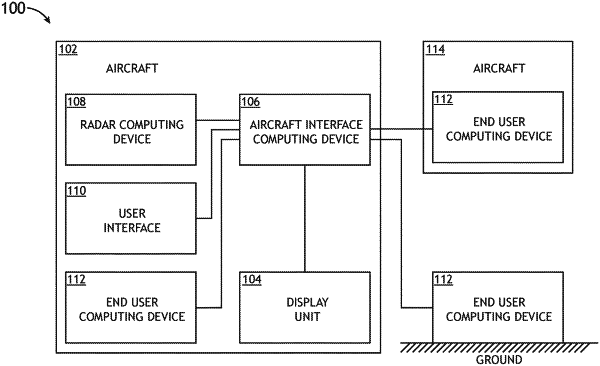| CPC G01S 7/003 (2013.01) [G01S 13/953 (2013.01)] | 13 Claims |

|
1. A system, comprising:
a radar receiver installed onboard an aircraft; and
at least one processor communicatively coupled to the radar receiver, the at least one processor installed onboard the aircraft, the at least one processor configured to:
receive or generate weather radar data based on signals received by the radar receiver;
identify an end user computing device to receive at least a portion of the weather radar data;
determine whether the end user computing device has a high priority need for the weather radar data or a low priority need for the weather radar data, wherein the low priority need is relatively low as compared to the high priority need, wherein for the low priority need, the at least the portion of the weather radar data is a portion of the weather radar data having a reduced size and/or reduced amount of the weather radar data that satisfies a low priority weather radar data need of the end user computing device, wherein for the high priority need, a size and/or amount of the at least the portion of the weather radar data is more than the reduced size and/or reduced amount associated with the low priority weather radar data need so as to satisfy a high priority weather radar data need of the end user computing device;
reduce a size and/or an amount of the weather radar data to be the portion of the weather radar data by decimating the weather radar data to the portion of the weather data through a process of selecting only valid radials and/or bins of the weather data associated with providing a broader view of a detected weather radar threat; and
upon a determination that the end user computing device has the low priority need for the weather radar data, route, via a datalink, the portion of the weather radar data having the reduced size and/or reduced amount of the weather radar data to the end user computing device.
|